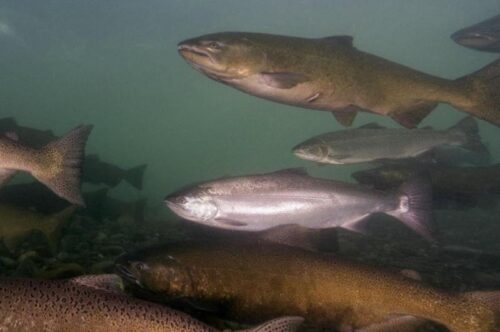
Reaction From Lawsuit Over Southeast Alaska King Salmon Status

As you’d expect, there is going to be some strong opinions from Alaska’s fishing industry as the Wild Fish Conservancy’s lawsuit to accelerate a petition to list Southeast Alaska king salmon, part of an important power-troll commercial fishery, as endangered or threatened. Here’s some reaction in a joint press release from the Longline Fishermen’s Association and the Alaska Marine Conservation Council:
Alaskans Criticize Wild Fish Conservancy Lawsuit as Counterproductive for Salmon Conservation
SITKA, AK — Leaders of fishery conservation efforts in Alaska today expressed disgust over the Wild Fish Conservancy’s (WFC) lawsuit filed against the National Marine Fisheries Service on May 8th, asserting that WFC is undermining efforts to protect and sustainably manage wild salmon populations.
“The National Marine Fisheries Service is conducting a thorough and science-based status review of Alaska’s salmon stocks in response to the ESA petition filed by this litigious group,” said Linda Behnken, Executive Director of the Alaska Longline Fishermen’s Association (ALFA). “Since WFC does not work in Alaska, it may not be aware that Alaska is exceptionally large with over 19,000 rivers or streams that support salmon. An accurate ESA status review takes time—especially when NMFS is dealing with budget cuts and staff reductions imposed by the current administration. Filing yet another lawsuit will only divert NMFS staff from working on the status review.”
The State of Alaska manages salmon for sustained yield, restricting harvest to ensure spawning stocks for the future. In fact, Alaska is the only state in the country with sustainable fisheries management written into its Constitution. Alaska fishermen are equally committed to responsible fisheries management and sustainable harvest.
“Salmon are under pressure from climate change, ocean acidification, and habitat damage in the lower 48,” noted ALFA board member and salmon fisherman Jeff Farvour. “Salmon habitat in Alaska is largely intact, but some salmon that summer off Alaska are suffering from habitat damage, including dams in the Columbia River Basin and industrial pollutants and urbanization in Wild Fish Conservancy’s own backyard—Puget Sound. Working with Alaska’s fishermen and local communities to address these bigger challenges to salmon would demonstrate a real commitment to the future of salmon.”
“Protecting Alaska’s Chinook salmon is essential, but it requires science-driven solutions and meaningful conservation efforts, not misinformed lawsuits. The Wild Fish Conservancy’s petition to list Gulf of Alaska Chinook as endangered is riddled with inaccuracies and insufficient research, failing to capture the full scope of salmon management in Alaska and the specific, hyperlocal needs of these salmon populations,” said Michelle Stratton, Alaska Marine Conservation Council Executive Director and Fisheries Scientist. “The state already has systems in place to support Chinook salmon recovery, and what’s truly needed is increased funding for a robust rehabilitation program that prioritizes habitat restoration, scientific monitoring, and sustainable fisheries practices tailored to individual runs. Rather than diverting resources to litigation, I encourage the Wild Fish Conservancy to direct its funding toward genuine, on-the-ground conservation and rehabilitation efforts that create a measurable positive impact.”
###
Alaska Longline Fishermen’s Association:
Based in Sitka, the Alaska Longline Fishermen’s Association is dedicated to the sustainable harvest of Alaska’s longline fisheries, ensuring that fishing communities can thrive while maintaining healthy marine ecosystems. www.alfafish.org
Alaska Marine Conservation Council:
The Alaska Marine Conservation Council works to protect and restore the marine environment through sustainable fishing practices, habitat protection and local stewardship. https://www.akmarine.org/



